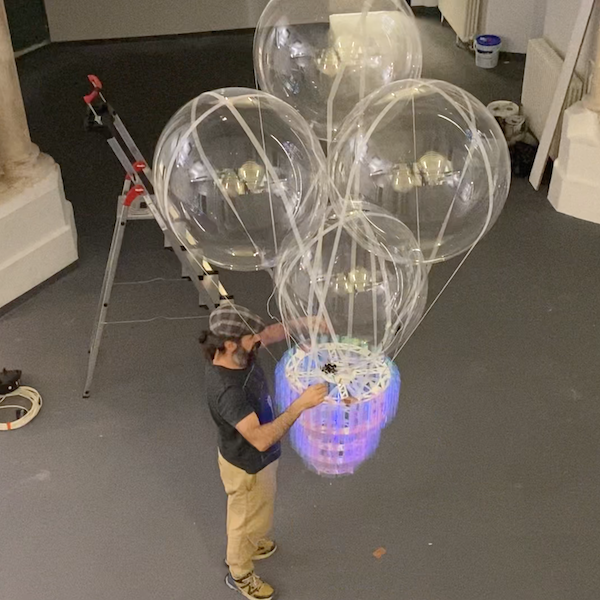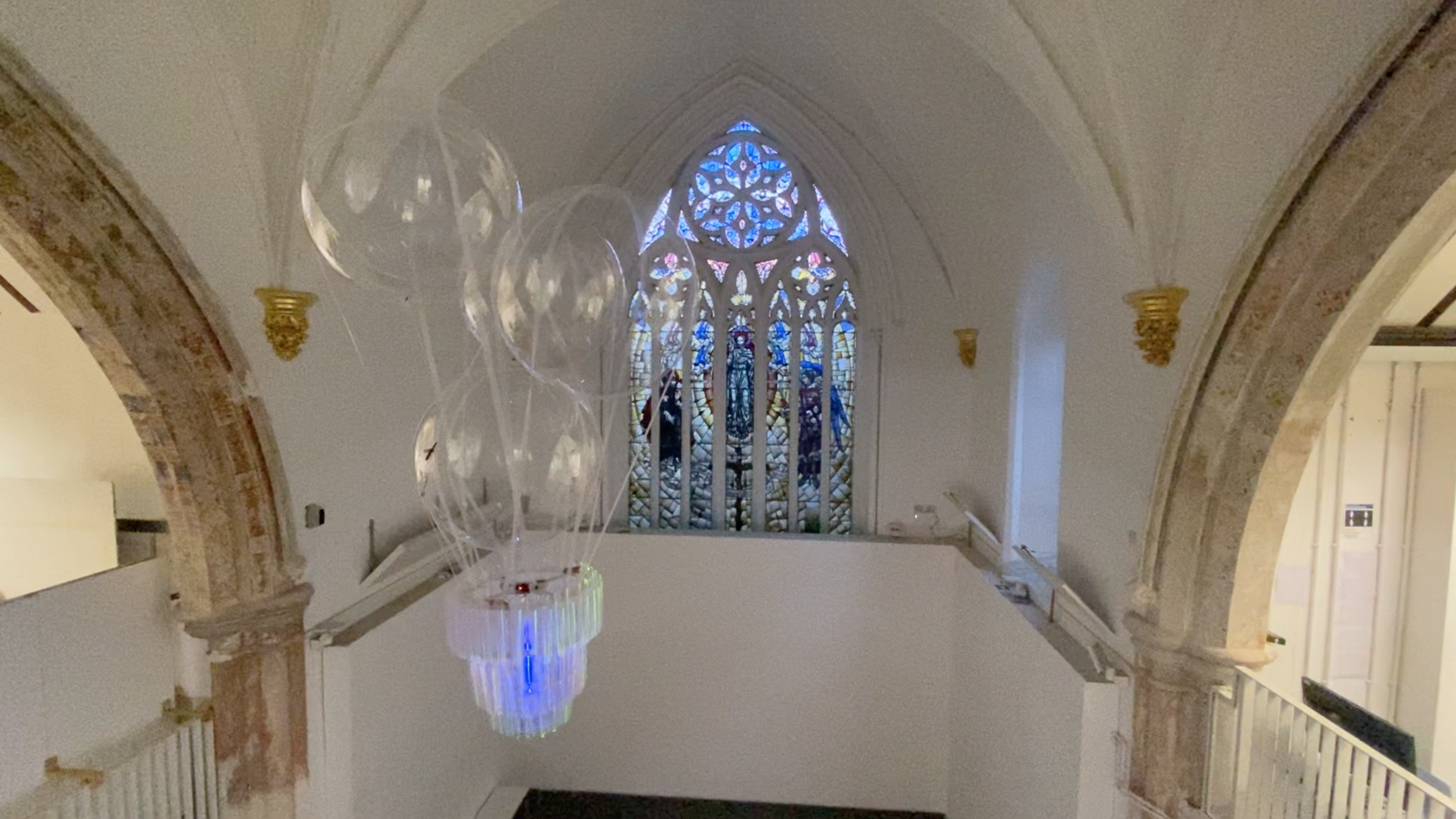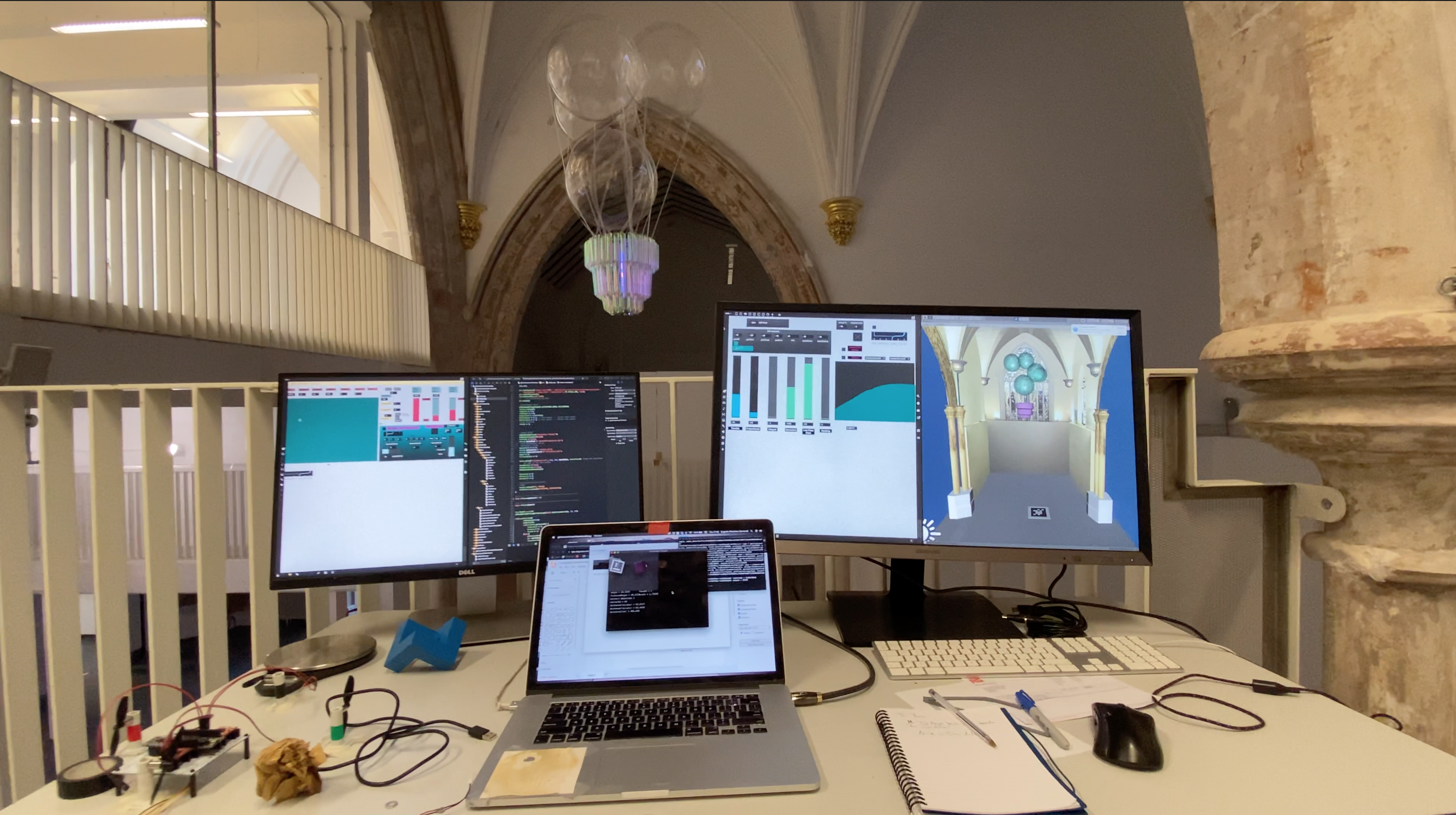The chandelier is an affectively disobedient object that explores the limbic friction between beauty and fear. Conceived as a balloon-drone, floating-light installation, it uses face-detection to interact with its audience in a predatory way. Its agency is derived by increasing the volatility within its material properties: light-emission, refraction and suspension are all waiting to be stirred by the presence of an audience.
Using a Raspberry Pi micro-controller, the installation sends a video stream to an off-board computer for detection algorithms to make calculations which then send motor information to an Esp-32 micro-controller, driving it away from the on-looker below. As the viewer gazes up at the chandelier it moves away slowly -the sound of the motors gets louder, the lights within it get brighter...
In psychology, cognitive dissonance is believed to occur when a person holds two or more conflicting beliefs, this can result in mental stress, which the individual will do anything in their power to change. Drawing on this concept, the chandelier places emotions at the front lines of the autonomic nervous system, it follows that holding two or more feelings at the same time may cause 'affective dissonance,' and that laughing, crying and other physiological reactions evolved as fast-acting coping mechanisms designed to release this tension. Inspired by Vibrant Materialism and Affect Theory, this piece is an investigation of what happens when an object with a bi-directional emotional signature becomes animate, creating an intricate space of conflicting affects in order to engage with its audience.

Owen Planchart is a Venezuelan multi-disciplinary researcher-artist exploring the interaction between human activity and technology. His practice traverses the relationship between the way we build our tools and the way our tools, in turn, shape our psychic and emotional experience. His process often involves taking old mechanical objects and using modern physical computing techniques to extend their original form into new poetic dimensions. The work delves into the space left behind by future innovations and the spectral projection of technologies of the past. He has worked in London, New York and Caracas in a variety of different fields ranging from architectural video-mapping to producing body-tracking visuals on cabaret-dancers.


